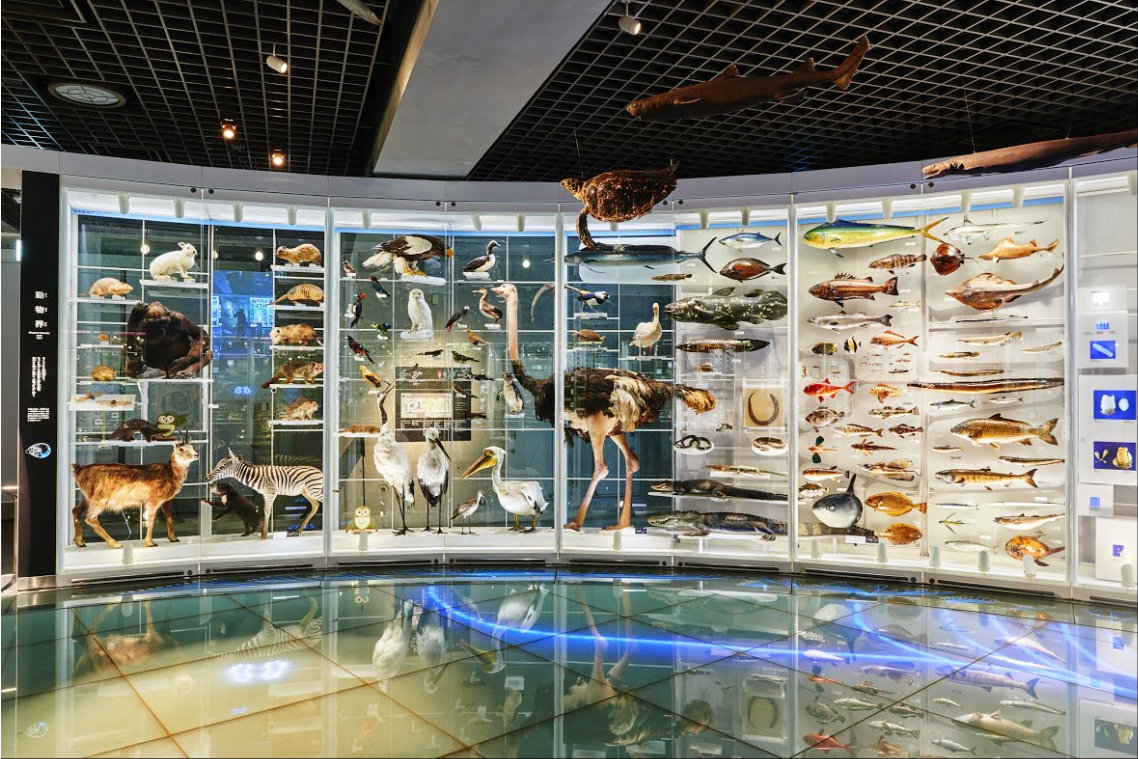The National Museum of Nature and Science (国立科学博物館) is in the northeast corner of Ueno Park in Tokyo. Opened in 1871, it has had several names, including Ministry of Education Museum, Tokyo Museum, Tokyo Science Museum, the National Science Museum of Japan, and the National Museum of Nature and Science as of 2007. It was renovated in the 1990s and 2000s, and offers a wide variety of natural history exhibitions and interactive scientific experiences.
Established in 1877, the National Museum of Nature and Science boasts one of the richest histories of any museum in Japan. It is Japan’s only nationally administered comprehensive science museum, and is a central institute for research in natural history and history of science and technology.
The National Science Museum says, “By conducting surveys and studies on science and other natural sciences related to natural history and their applications and collection, storage (including training) of materials related to them and public viewing, etc., natural science and social education (National Institute for Science Museum Law: Article 3). The hotel is not a museum in the museum law but a museum equivalent facility. This is because the museum law does not categorize facilities in the country. He is doing many businesses as a leading position of museums throughout the country. Although it was separated from the country by making it into independent administrative corporation, it has been named “national” after that. This is an exception that was accepted because it is necessary to show that it is a national institution in relation to overseas.
Each floor of National Museum of Nature and Science is organized around a unifying theme, informed by the Museum’s rich and high-quality collection of original specimens. Each floor’s exhibits work together to convey a message, in turn relating to the overarching message of the permanent exhibits, “Human Beings in Coexistence with Nature.” By presenting these themes in a clear and systematic fashion, the Museum encourages visitors to think about what we can do to protect the environment in which all living things exist and to build a future of harmonious coexistence between people and the natural world.
Japan Gallery:
Organized around the theme of “The Environment of the Japanese Archipelago,” the Japan Gallery offers exhibits on the nature and history of the Japanese archipelago, the process by which the modern population of Japan was formed, and the history of the relationship between the Japanese people and nature.
Global Gallery:
The theme of the Global Gallery is “The History of Life on Earth” which explores the deep interrelationships among the earth’s diverse living things, the evolution of life as environmental change drives a cycle of speciation and extinction, and the history of human ingenuity.
Theater 360 degrees (theater · san · log · maru):
360 degree full sky type video theater with the screen as the whole wall inside the sphere. “Earth’s room” which was released at the Nagakute Nihonkan of Aichi Japan’s Earth Expo was relocated. Open to the public from December 21, 2006.
Look at the bridge that passed through the center of the sphere and the image projected on the whole inner wall of the sphere with inner diameter of 12.8 meters which is about one millionth of the size of the earth. Until December 13, 2009, one piece from the Ai Expo / Final image, and two from the National Science Museum original image (the first phase work) were screened with a rotation of every two months. From December 22, 2009, new video was added to the original video and it was screened in combination with the original original video. Also, concerning the Aichi / Earth Exhibition picture, it was decided that three pieces will be screened together every Friday around 19 o’clock.
